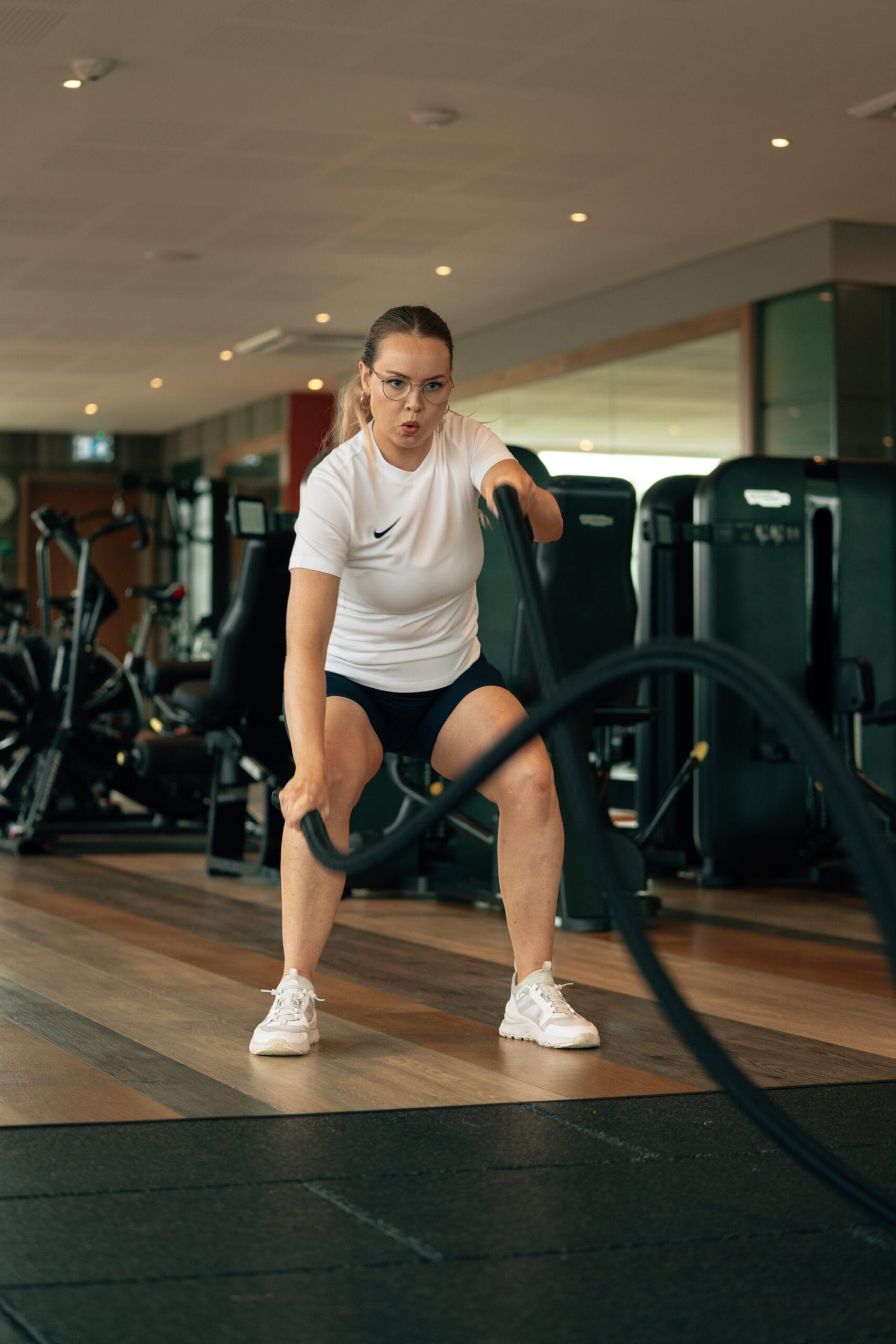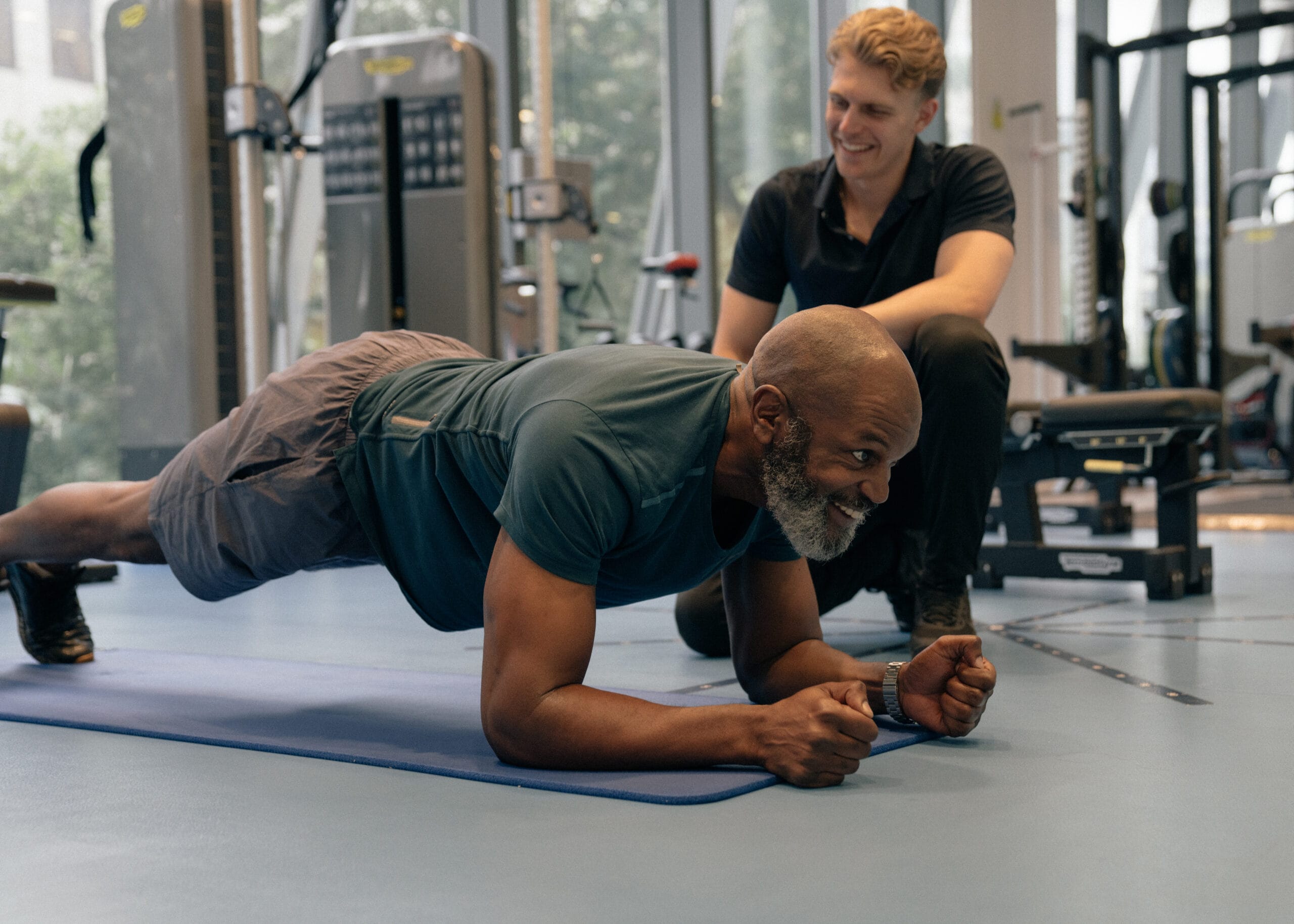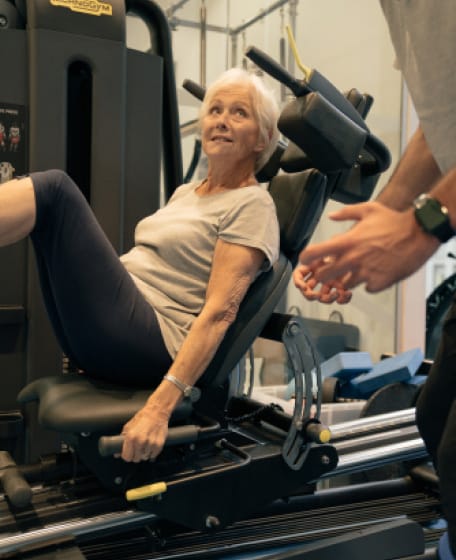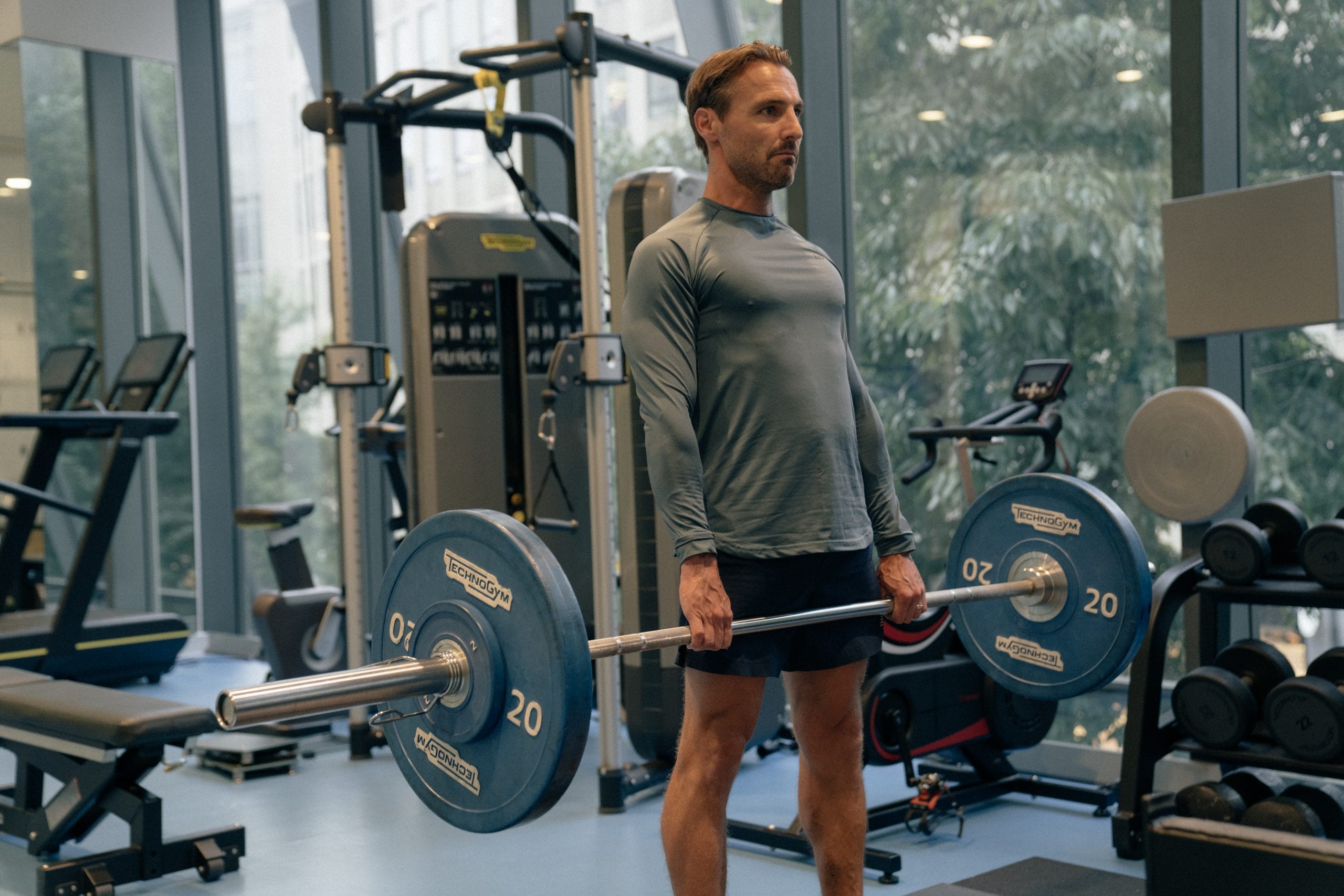HYROX for Runners: Adapt Your Body for Hybrid Training

Bradley Casey
Physiotherapist
- 10 October, 2025
- Hyrox
- Running
- 6 min read
HYROX for Runners: Adapt Your Body for Hybrid Training
Bringing together running and functional workout stations, HYROX has become one of the fastest-growing fitness competitions worldwide, attracting runners, gym enthusiasts, and everyday athletes. Established in 2017, its appeal for runners is clear: it takes the familiar rhythm of running and combines it with strength, mobility, and endurance exercise challenges.
Unlike traditional marathons or road races, HYROX is not just about the number of miles or achieving your personal best (PB). To really succeed, runners must adapt their bodies and training to the specific demands of hybrid racing.
What Makes HYROX Different from Everyday Running?
A HYROX event features eight 1km runs, each followed by a functional workout station. Over the course of the race, competitors will move between running and various challenges. These include the following:
- Ski: 1000km
- Row: 1000km
- Farmers Carry: 200m
- Sandbag Lunges: 100m
- Sled Push: 50m
- Sled Pull: 50m
- Burpee Broad Jumps: 80m
- Wall Balls: 100 reps.
So, “How far do you run in HYROX?” In total, the HYROX running distance is 8km, but don’t be mistaken – the constant transitions make it far more demanding than a straightforward 8km. The constant transitions between stations push your cardiovascular system and muscles to adapt under fatigue, meaning it’s not just your endurance that’s tested, but your ability to recover, stabilise, and push through heavy loads.

Adapting Your Running Plan for HYROX
For runners, the most important adaptation to your running plan is learning to maintain pace and form despite the fatigue from competing in the various stations. To counteract this, your HYROX running plan should go beyond steady runs and incorporate several methods that can keep you sustained along the way.
- Interval training: This can help you develop and improve speed and recovery capacity
- Compromised running: Running straight after lifting weights or completing a full body circuit can prepare your body for the transitions of the race itself.
- Pacing: Starting too fast in the HYROX event can leave you feeling drained long before the last kilometre, so your training should really reflect the need for steady effort across the entire event to prevent burnout.
Choosing the right footwear is also an essential part of preparation. HYROX running shoes, or trainers suitable for hybrid competition, will need to provide stability for the weight stations while remaining comfortable for running. A lightweight shoe with solid grip and support will allow you to transition more effectively, allowing you to grip for sled pushes while staying light for runs. Additionally, a gait analysis with a Sports Physiotherapist can identify the best footwear for your biomechanics.
Bradley Casey, Physiotherapist at Pure Sports Medicine explains: “For running specifically, runners would also benefit from working on their lactate threshold and completing VO2 max intervals. Both should be completed with the aim of hitting that lactate threshold point at a higher heart rate. This will allow you to sustain a higher pace for longer, specifically following station fatigue, which can be tested in clinic.
Ultimately, strategy is just as important as overall fitness. Running under fatigue should become a key staple in your training programme, whether that means performing sled pushes at speed, followed by a 1km run or alternating rowing sprints with running intervals. Training your body to handle this switch up will reduce the shock on race day. Strengthening your posterior chain (the glutes, hamstrings and calves) will also be vital to support your running capability under load and fatigue.
Strength and Conditioning for HYROX Victory
Many runners enter HYROX with strong aerobic bases but are caught off guard by how quickly heavy sleds, wall balls and rowers can quickly lead to extreme fatigue. Strength and conditioning work must be prioritised alongside running and feature compound lifts, such as squats, deadlifts and lunges that build foundational strength that transfers directly into HYROX weights, such as the Farmers Carry. Training with sleds develops the quad and glute strength needed, while practice on RowERG and SkiErg machines builds both power and technique.
The key will be not to abandon running but blend it with strength training in a way that allows your body to switch smoothly between endurance and force – this hybrid adaptation is what separates successful HYROX athletes from those who struggle.
At Pure Sports Medicine, our Strength and Conditioning programmes are specifically designed to help athletes develop this hybrid adaptation, helping you to train safely, progress effectively and arrive with the ability needed for completing HYROX at your very best.

Nutrition and Recovery
Training is only half of your running training. HYROX nutrition and recovery strategies determine how well your body adapts and how energised you will feel on race day.
- During training blocks: Carbohydrates provide essential energy for intense sessions, while protein supports your muscle repair.
- On race day: Opt for simple and easily digestible carbohydrates, such as porridge with mixed berries to sustain your endurance without causing discomfort.
- Hydration: Essential, particularly during HYROX events – key for performance and recovery.
Following the race, your recovery strategies are equally vital. Sleep remains the most effective tool for allowing your muscles to repair, with seven to nine hours being the recommended range. A sports massage can help to reduce soreness, improve circulation and maintain mobility, while Physiotherapy ensures that minor aches and pains do not turn into injuries that fully derail your training.
At Pure Sports Medicine, we offer both nutrition services and Sports and Exercise Medicine and provide strategies that not only fuel your HYROX race but also optimise recovery between sessions.
A HYROX Training Programme for Runners
A well-rounded HYROX training programme for runners should fully combine running, strength and recovery in a structured way. An example four-week plan could include:
- Interval running sessions: These could be completed early in the week to build your speed.
- Dedicated strength sessions: Focus specifically on weights, such as sleds, squats and compound lifts, such as deadlifts.
- Hyrox specific sessions: Combine cardio with functional exercises to mirror the demands of HYROX. This approach helps you refine your technique, build resilience under fatigue, and closely simulate race conditions through HYROX-specific workouts performed at 50%, 80%, or 100% effort.
- Longer steady runs: This can help you maintain your aerobic fitness.
- Mobility and recovery days: Rest will be essential and should be considered part of your training plan, rather than an add-on or afterthought.
This structure provides essential balance; however, every runner will have unique strengths, weaknesses and injury histories. While some runners may need more strength development, others will benefit from reduced running volume to avoid overload. For this reason, the most effective HYROX training programme is one that is tailored to the individual.
Our expert team at Pure Sports Medicine can design personalised programmes designed around your fitness levels, goals, and lifestyle.

5 Common Mistakes to Avoid
- Assuming your aerobic capacity will carry you through: Endurance is helpful, but it will not be enough on its own.
- Neglecting strength training: This will leave athletes unprepared with sleds and wall balls.
- Overtraining without proper recovery: Fatigue will build, and injury risks increase.
- Wearing inappropriate footwear: Stability and grip are vital during functional stations.
- Ignoring nutrition: This can leave you under-fuelled and unable to perform consistently throughout the event.
How Pure Sports Medicine Can Help You Prepare
At Pure Sports Medicine, our goal is to support everyday fitness enthusiasts and elite athletes in reaching their potential while staying injury-free. HYROX training places exceptional demands on the body, but our multidisciplinary services can help you meet your goals.
- Physiotherapy: Our exceptional team can assess your movement patterns, address pain and reduce the risk of injury.
- Strength and Conditioning coaching: Build power and resilience needed for heavy sled pushes and pulls, wall balls, and farmer carry.
- Nutrition consultations: Tailor fuelling strategies for both training and race day.
- Sports & Exercise Medicine: Support recovery, reduce soreness and improve performance.
- Performance testing: Identify your strengths and areas for improvement, allowing for a tailored plan that maximises results. Assessments such as ForceDeck testing, Lactate Threshold Testing and comprehensive Physiological Performance & Health Assessments provide valuable insights to further your performance.
By combining these services, we help athletes approach HYROX with confidence, knowing they have trained smartly and are supported by experts who understand the physical and nutritional demands of hybrid competition.
Your Next Step in HYROX Training
HYROX is a great test for all abilities, especially for runners who want to push their limits and try something new beyond the traditional racing format. However, success in HYROX requires more than running expertise, but it will require strategy, power, nutrition and recovery.
With guidance from our multidisciplinary team at Pure Sports Medicine, we can build a training programme that maximises your strengths, addresses weaknesses, and keeps you injury free. By training smarter, you can arrive at the start line prepared, confident and ready to deliver your best performance.
Ready to take your HYROX preparation to the next level? Book a consultation with Pure Sports Medicine today and discover how our tailored services can help you achieve your best race yet.

Advice
Over the last 20+ years our experts have helped more than 100,000 patients, but we don’t stop there. We also like to share our knowledge and insight to help people lead healthier lives, and here you will find our extensive library of advice on a variety of topics to help you do the same.
OUR ADVICE HUBS See all Advice Hubs

